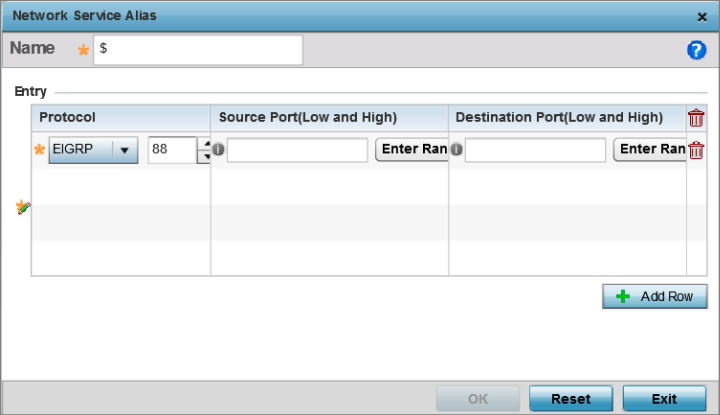You can add a new network service alias configuration or edit an existing configuration.
Select an existing network service alias and click Edit to modify it. Select Delete to remove an existing network service alias from those available in the list.
Use Copy to create a copy of the selected policy and modify it for further use. Use Rename to rename the selected policy.


Note
The Network Service Alias name always starts with a dollar sign ($).
|
Protocol |
Specify the protocol for which the alias is created. Use the drop down to select the protocol from eigrp, gre, icmp, igmp, ip, vrrp, igp, ospf, tcp and udp. Select other if the protocol is not listed. When a protocol is selected, its protocol number is automatically selected. |
|
Source Port (Low and High) |
This field is relevant only if the protocol is tcp or udp. Specify the source ports for this protocol entry. A range of ports can be specified. Select the Enter Range button next to the field to enter a lower and higher port range value. Up to eight (8) ranges can be specified. |
|
Destination Port (Low and High) |
This field is relevant only if the protocol is tcp or udp. Specify the destination ports for this protocol entry. A range of ports can be specified. Select the Enter Range button next to the field to enter a lower and higher port range value. Up to eight (8) such ranges can be specified. |
Select Reset to revert the screen back to its last saved configuration.